Abstract
Streptomyces lipmanii produces two β-lactam antibiotics, penicillin N and 7-(5-amino-5-carboxyvaleramido)-7-methoxycephalosporanic acid. Both antibiotics contain α-aminoadipic acid side chains. In similar antibiotics produced by certain fungi, the α-aminoadipoyl moiety is derived from an intermediate in lysine biosynthesis. Our findings indicate, however, that in S. lipmanii, lysine is synthesized via α, ε-diaminopimelic acid—an entirely different biosynthetic route. This finding suggests not only a unique mechanism for the derivation of α-aminoadipate, but also that the system may be particularly amenable to genetic manipulation.
Full text
PDF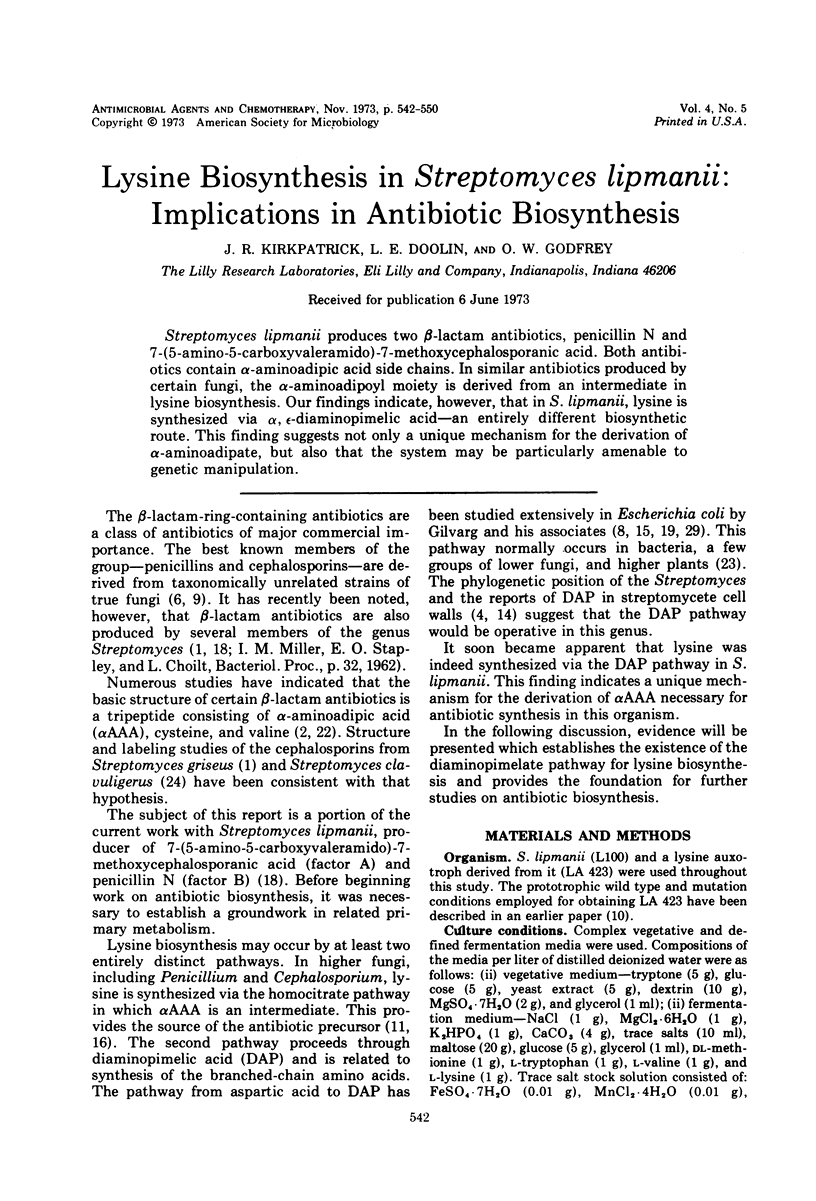
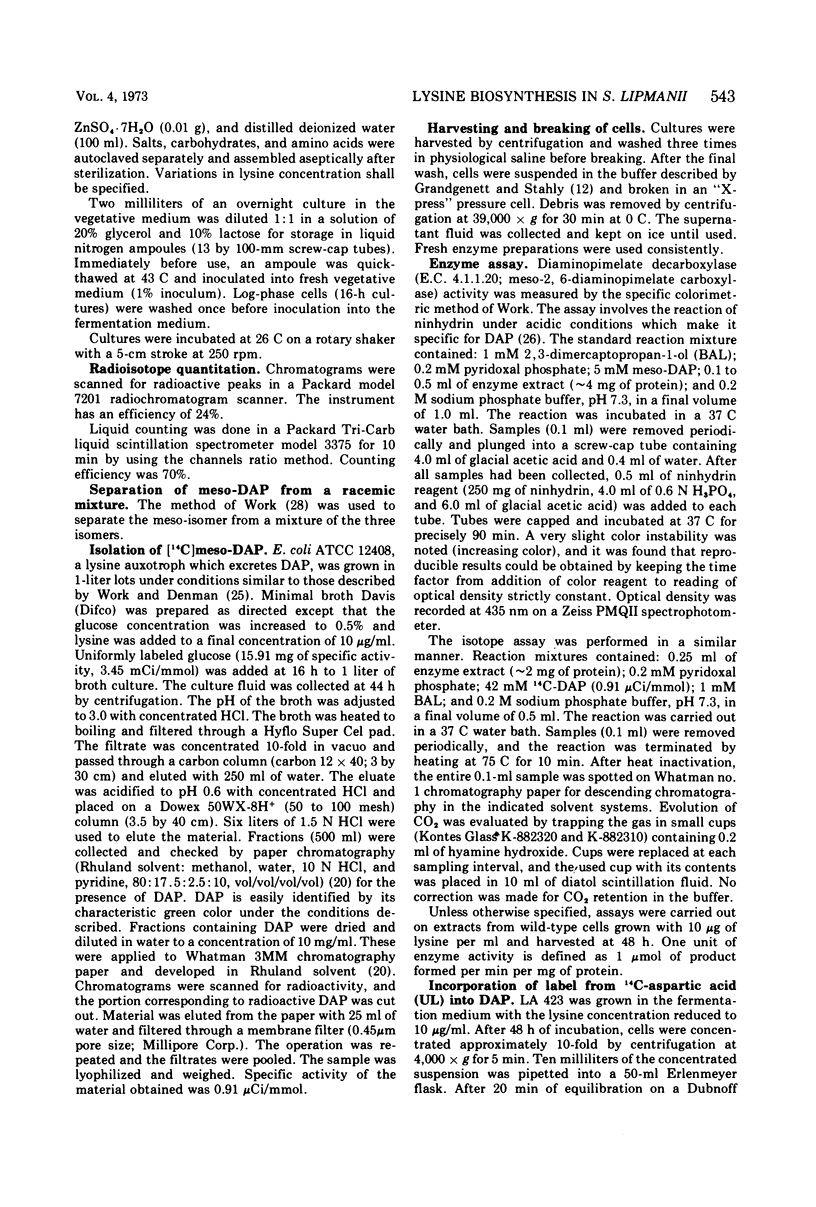
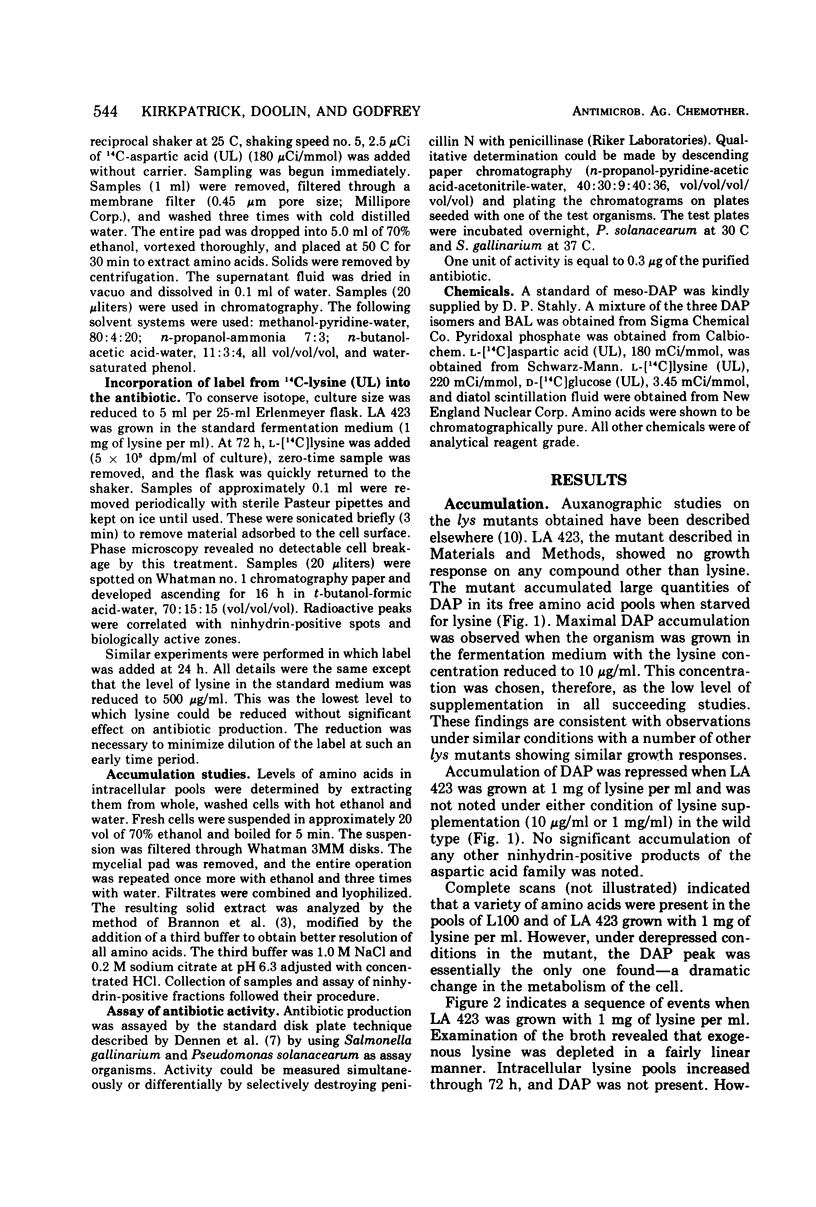
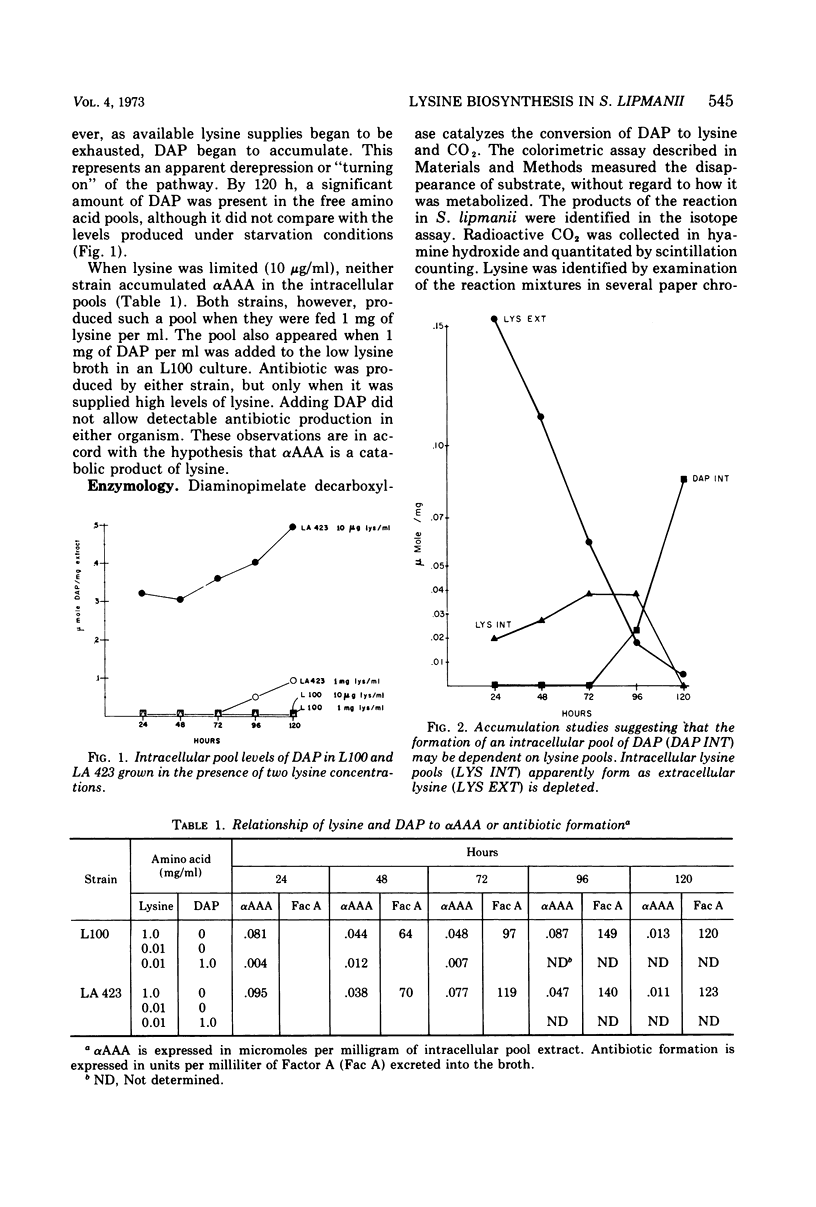
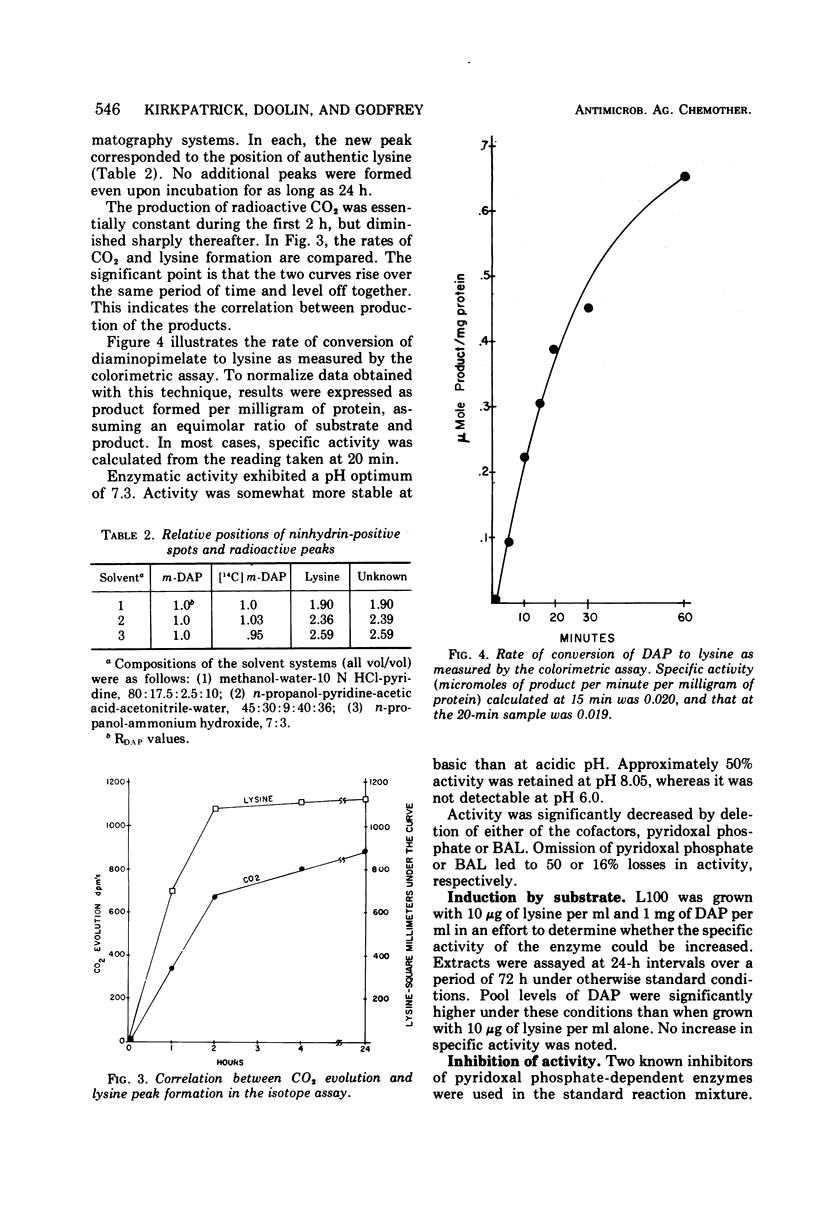
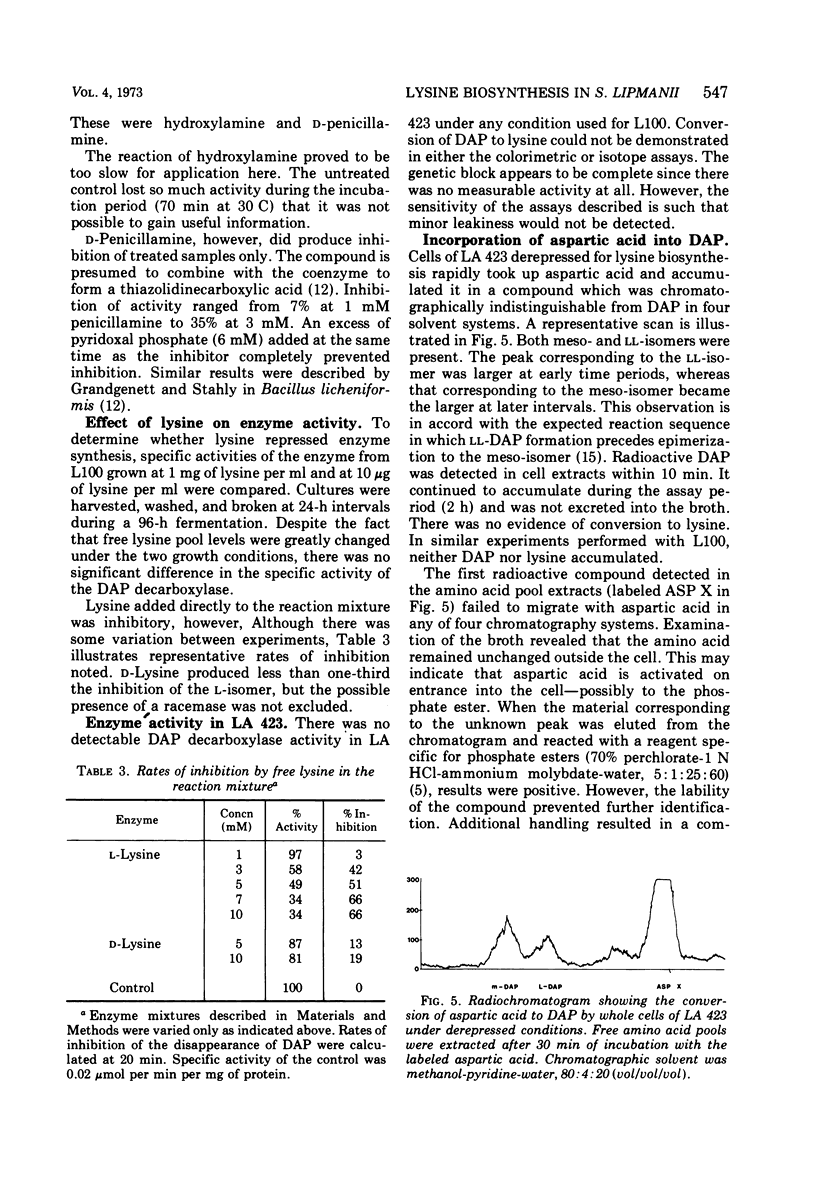

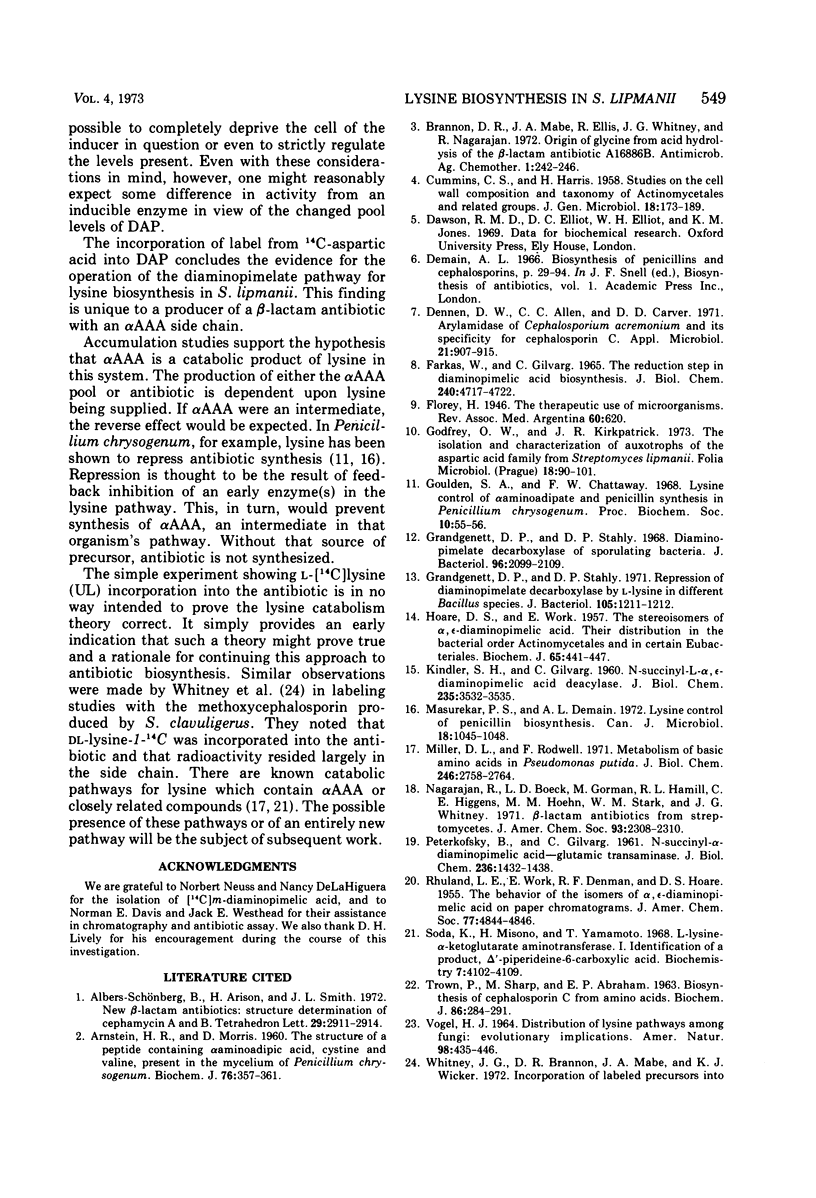
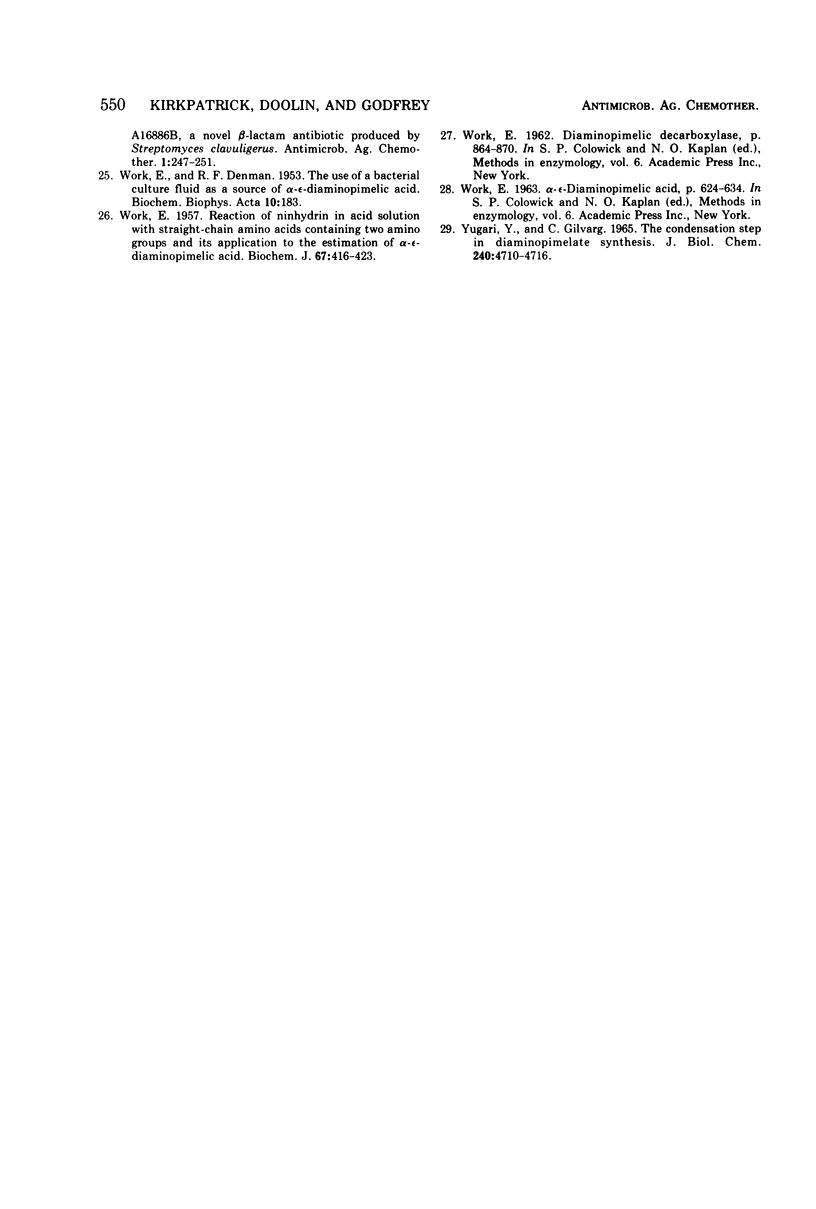
Selected References
These references are in PubMed. This may not be the complete list of references from this article.
- ARNSTEIN H. R., MORRIS D. The structure of a peptide, containing alpha-aminoadipic acid, cystine and valine, present in the mycelium of Penicillium chrysogenum. Biochem J. 1960 Aug;76:357–361. doi: 10.1042/bj0760357. [DOI] [PMC free article] [PubMed] [Google Scholar]
- Brannon D. R., Mabe J. A., Ellis R., Whitney J. G., Nagarajan R. Origin of glycine from acid hydrolysis of the -lactam antibiotic A16886B. Antimicrob Agents Chemother. 1972 Mar;1(3):242–246. doi: 10.1128/aac.1.3.242. [DOI] [PMC free article] [PubMed] [Google Scholar]
- CUMMINS C. S., HARRIS H. Studies on the cell-wall composition and taxonomy of Actinomycetales and related groups. J Gen Microbiol. 1958 Feb;18(1):173–189. doi: 10.1099/00221287-18-1-173. [DOI] [PubMed] [Google Scholar]
- Dennen D. W., Allen C. C., Carver D. D. Arylamidase of Cephalosporium acremonium and its specificity for cephalosporin C. Appl Microbiol. 1971 May;21(5):907–915. doi: 10.1128/am.21.5.907-915.1971. [DOI] [PMC free article] [PubMed] [Google Scholar]
- Farkas W., Gilvarg C. The reduction step in diaminopimelic acid biosynthesis. J Biol Chem. 1965 Dec;240(12):4717–4722. [PubMed] [Google Scholar]
- Grandgenett D. P., Stahly D. P. Diaminopimelate decarboxylase of sporulating bacteria. J Bacteriol. 1968 Dec;96(6):2099–2109. doi: 10.1128/jb.96.6.2099-2109.1968. [DOI] [PMC free article] [PubMed] [Google Scholar]
- Grandgenett D. P., Stahly D. P. Repression of diaminopimelate decarboxylase by L-lysine in different Bacillus species. J Bacteriol. 1971 Mar;105(3):1211–1212. doi: 10.1128/jb.105.3.1211-1212.1971. [DOI] [PMC free article] [PubMed] [Google Scholar]
- HOARE D. S., WORK E. The stereoisomers of alpha epsilon-diaminopimelic acid. II. Their distribution in the bacterial order Actinomycetales and in certain Eubacteriales. Biochem J. 1957 Mar;65(3):441–447. doi: 10.1042/bj0650441. [DOI] [PMC free article] [PubMed] [Google Scholar]
- KINDLER S. H., GILVARG C. N-Succinyl-L-2,6-diaminopimelic acid deacylase. J Biol Chem. 1960 Dec;235:3532–3535. [PubMed] [Google Scholar]
- Kirkpatrick J. R., Godfrey O. W. The isolation and characterization of auzotrophs of the aspartic acid family from Streptomyces lipmanii. Folia Microbiol (Praha) 1973;18(2):90–101. doi: 10.1007/BF02872830. [DOI] [PubMed] [Google Scholar]
- Masurekar P. S., Demain A. L. Lysine control of penicillin biosynthesis. Can J Microbiol. 1972 Jul;18(7):1045–1048. doi: 10.1139/m72-162. [DOI] [PubMed] [Google Scholar]
- Miller D. L., Rodwell V. W. Metabolism of basic amino acids in Pseudomonas putida. Catabolism of lysine by cyclic and acyclic intermediates. J Biol Chem. 1971 May 10;246(9):2758–2764. [PubMed] [Google Scholar]
- Nagarajan R., Boeck L. D., Gorman M., Hamill R. L., Higgens C. E., Hoehn M. M., Stark W. M., Whitney J. G. Beta-lactam antibiotics from Streptomyces. J Am Chem Soc. 1971 May 5;93(9):2308–2310. doi: 10.1021/ja00738a035. [DOI] [PubMed] [Google Scholar]
- PETERKOFSKY B., GILVARG C. N-Succinyl-L-diaminopimelic-glutamic transaminase. J Biol Chem. 1961 May;236:1432–1438. [PubMed] [Google Scholar]
- Soda K., Misono H., Yamamoto T. L-Lysine:alpha-ketoglutarate aminotransferase. I. Identification of a product, delta-1-piperideine-6-carboxylic acid. Biochemistry. 1968 Nov;7(11):4102–4109. doi: 10.1021/bi00851a045. [DOI] [PubMed] [Google Scholar]
- TROWN P. W., SMITH B., ABRAHAM E. P. Biosynthesis of cephalosporin C from amino acids. Biochem J. 1963 Feb;86:284–291. doi: 10.1042/bj0860284. [DOI] [PMC free article] [PubMed] [Google Scholar]
- WORK E., DENMAN R. F. The use of a bacterial culture fluid as a source of alpha-diaminopimelic acid. Biochim Biophys Acta. 1953 Jan;10(1):183–183. doi: 10.1016/0006-3002(53)90226-1. [DOI] [PubMed] [Google Scholar]
- WORK E. Reaction of ninhydrin in acid solution with straight-chain amino acids containing two amino groups and its application to the estimation of alpha epsilon-diaminopimelic acid. Biochem J. 1957 Nov;67(3):416–423. doi: 10.1042/bj0670416. [DOI] [PMC free article] [PubMed] [Google Scholar]
- Whitney J. G., Brannon D. R., Mabe J. A., Wicker K. J. Incorporation of labeled precursors into A16886B, a novel -lactam antibiotic produced by Streptomyces clavuligerus. Antimicrob Agents Chemother. 1972 Mar;1(3):247–251. doi: 10.1128/aac.1.3.247. [DOI] [PMC free article] [PubMed] [Google Scholar]
- Yugari Y., Gilvarg C. The condensation step in diaminopimelate synthesis. J Biol Chem. 1965 Dec;240(12):4710–4716. [PubMed] [Google Scholar]


